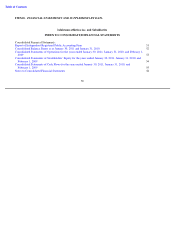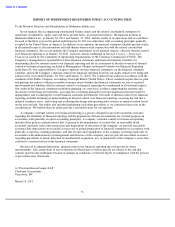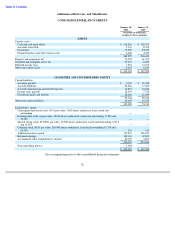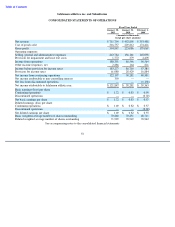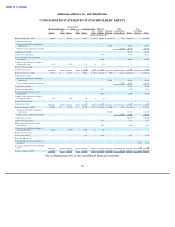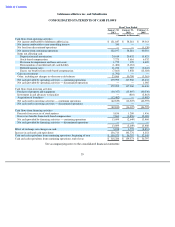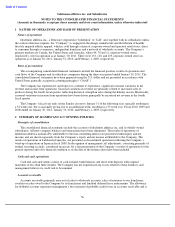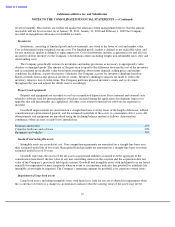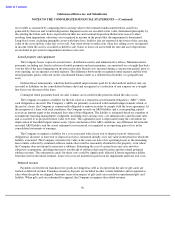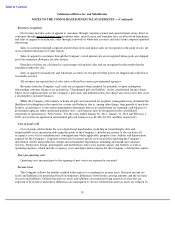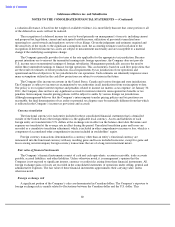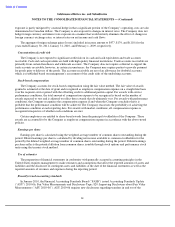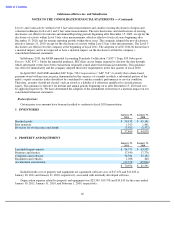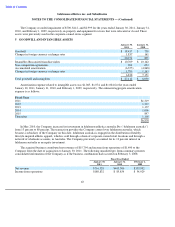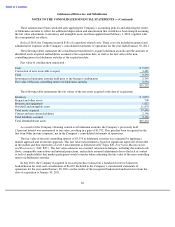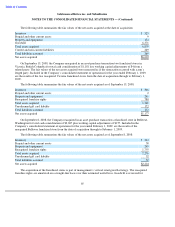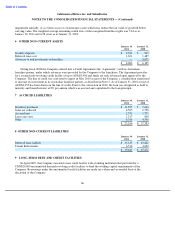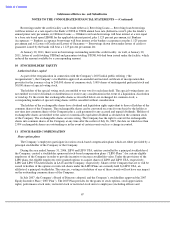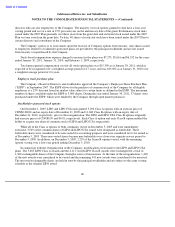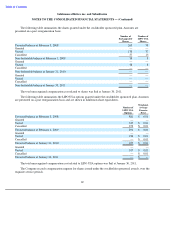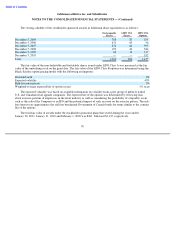Lululemon 2010 Annual Report Download - page 65
Download and view the complete annual report
Please find page 65 of the 2010 Lululemon annual report below. You can navigate through the pages in the report by either clicking on the pages listed below, or by using the keyword search tool below to find specific information within the annual report.
Table of Contents
lululemon athletica inc. and Subsidiaries
NOTES TO THE CONSOLIDATED FINANCIAL STATEMENTS — (Continued)
a valuation allowance, if based on the weight of available evidence, it is more likely than not that some portion or all
of the deferred tax assets will not be realized.
The recognition of a deferred income tax asset is based primarily on management’s forecasts, including current
and proposed tax legislation, current and anticipated taxable income, utilization of previously unrealized non-
operating loss carryforwards and regulatory reviews of tax filings. Given the judgments and estimates required and
the sensitivity of the results to the significant assumptions used, the accounting estimates used in relation to the
recognition of deferred income tax assets are subject to measurement uncertainty and are susceptible to a material
change if the underlying assumptions change.
The Company generally provides for taxes at the rate applicable for the appropriate tax jurisdiction. Because
present intentions are to reinvest the unremitted earnings into foreign operations, the Company does not provide
U.S. income taxes on unremitted earnings of foreign subsidiaries. Management periodically assesses the need to
utilize these unremitted earnings to finance foreign operations. This assessment is based on cash flow projections that
are the result of estimates of future production, fiscal requirements by tax jurisdiction of our operations and
operational and fiscal objectives by tax jurisdiction for our operations. Such estimates are inherently imprecise since
many assumptions utilized in the cash flow projections are subject to revision in the future.
The Company files income tax returns in the United States, Canada and various foreign and state jurisdictions.
The Company is subject to income tax examination by tax authorities in all jurisdictions from our inception to date.
Our policy is to recognize interest expense and penalties related to income tax matters as tax expense. At January 30,
2011, the Company does not have any significant accruals for interest related to unrecognized tax benefits or tax
penalties. Intercompany transfer pricing policies will be subject to audits by various foreign tax jurisdictions.
Although management believes that the Company’s intercompany transfer pricing policies and tax positions are
reasonable, the final determination of tax audits or potential tax disputes may be materially different from that which
is reflected in the Company’s income tax provisions and accruals.
Currency translation
The functional currency for each entity included in these consolidated financial statements that is domiciled
outside of the United States (the foreign entities) is the applicable local currency. Assets and liabilities of each
foreign entity are translated into U.S. dollars at the exchange rate in effect on the balance sheet date. Revenues and
expenses are translated at the average rate in effect during the period. Unrealized translation gains and losses are
recorded as a cumulative translation adjustment, which is included in other comprehensive income or loss, which is a
component of accumulated other comprehensive income included in stockholders’ equity.
Foreign currency transactions denominated in a currency other than an entity’s functional currency are
remeasured into the functional currency with any resulting gains and losses included in income, except for gains and
losses arising on intercompany foreign currency transactions that are of a long-term investment nature.
Fair value of financial instruments
The Company’s financial instruments consist of cash and cash equivalents, accounts receivable, trade accounts
payable, accrued liabilities, and other liabilities. Unless otherwise noted, it is management’s opinion that the
Company is not exposed to significant interest, currency or credit risks arising from these financial instruments. All
foreign exchange gains or losses are recorded in the consolidated statements of operations under selling, general and
administrative expenses. The fair value of these financial instruments approximates their carrying value, unless
otherwise noted.
Foreign exchange risk
A significant portion of the Company’s sales are denominated in Canadian dollars. The Company’s exposure to
foreign exchange risk is mainly related to fluctuations between the Canadian dollar and the U.S. dollar. This
60


